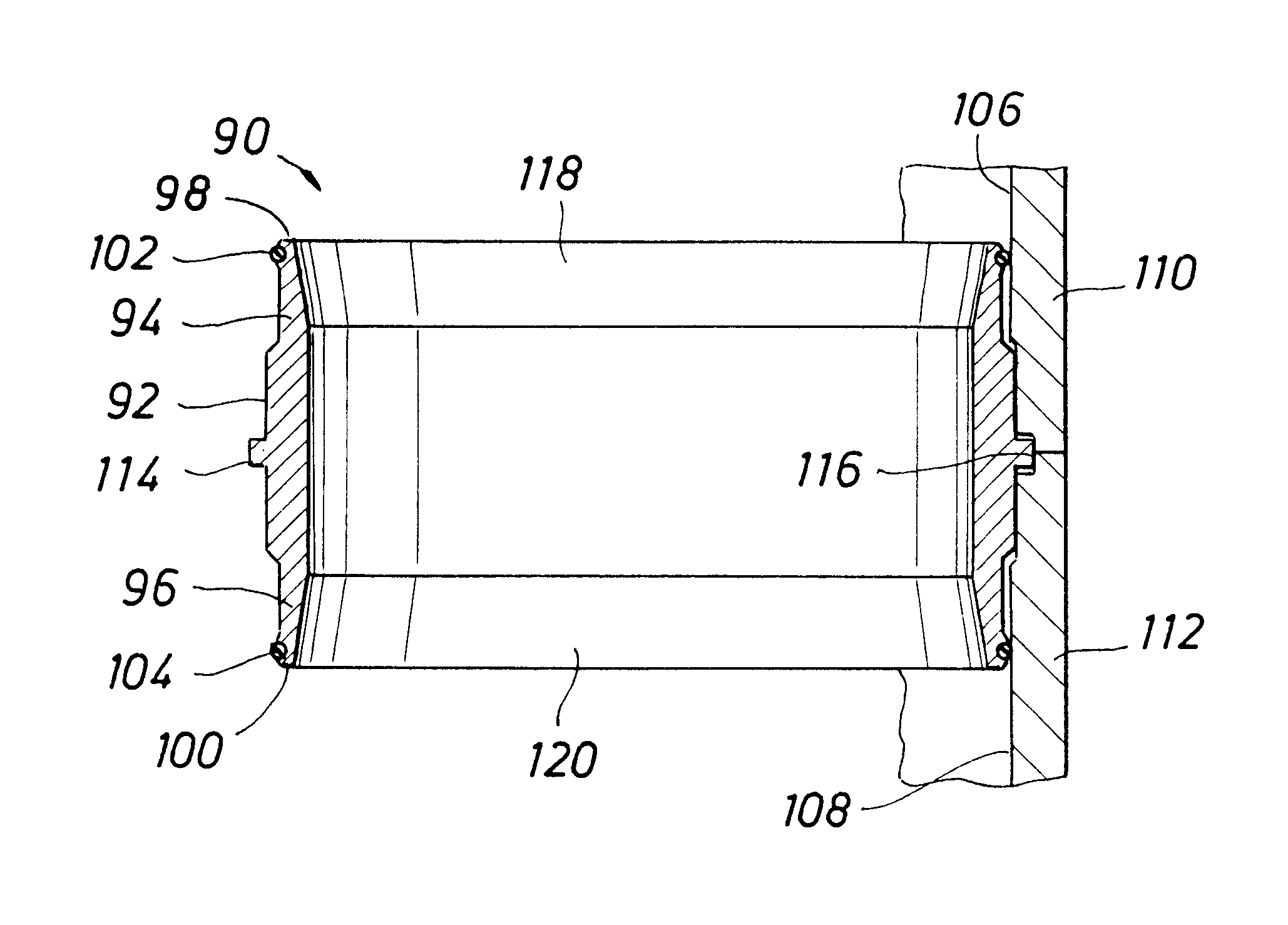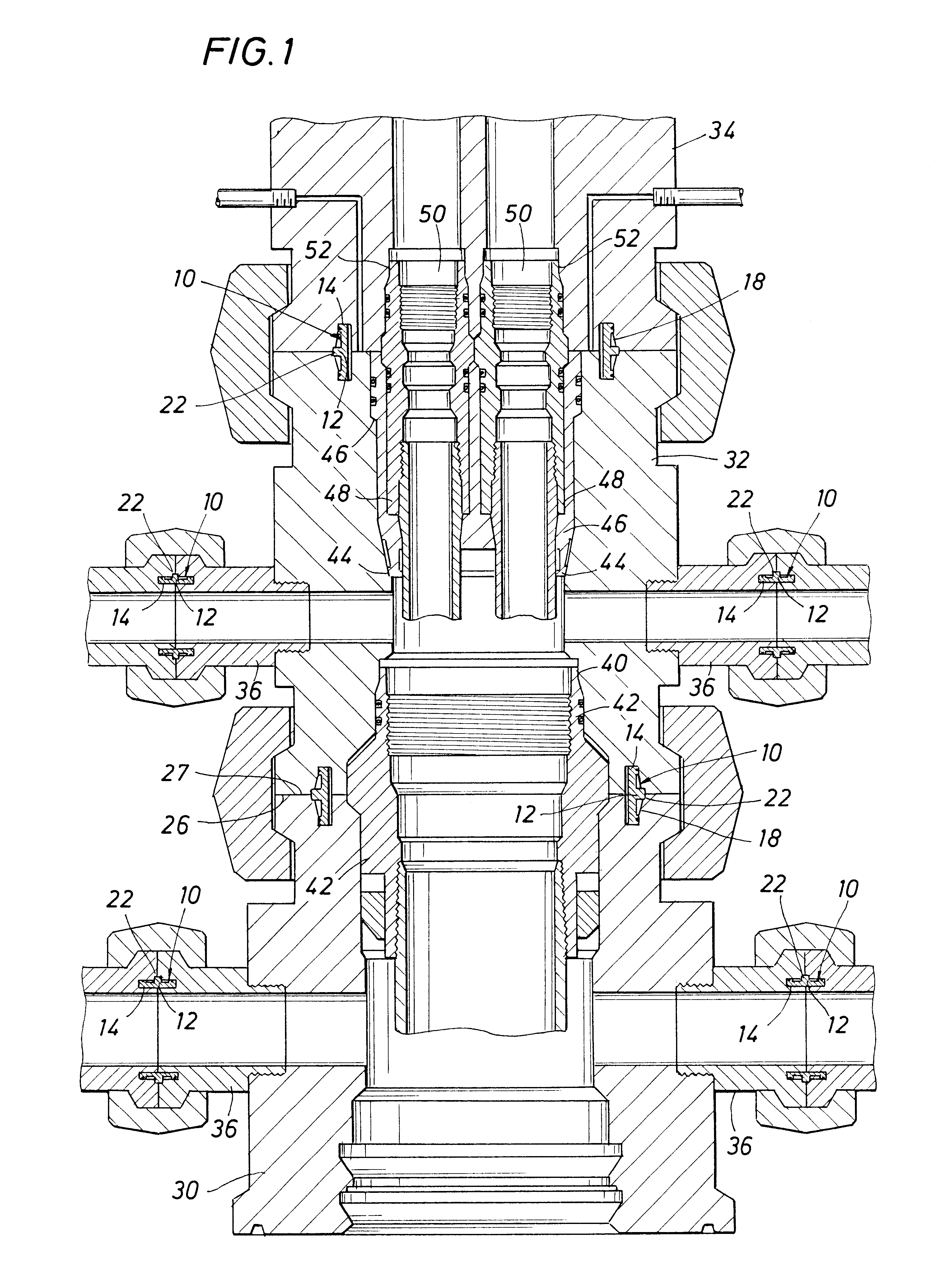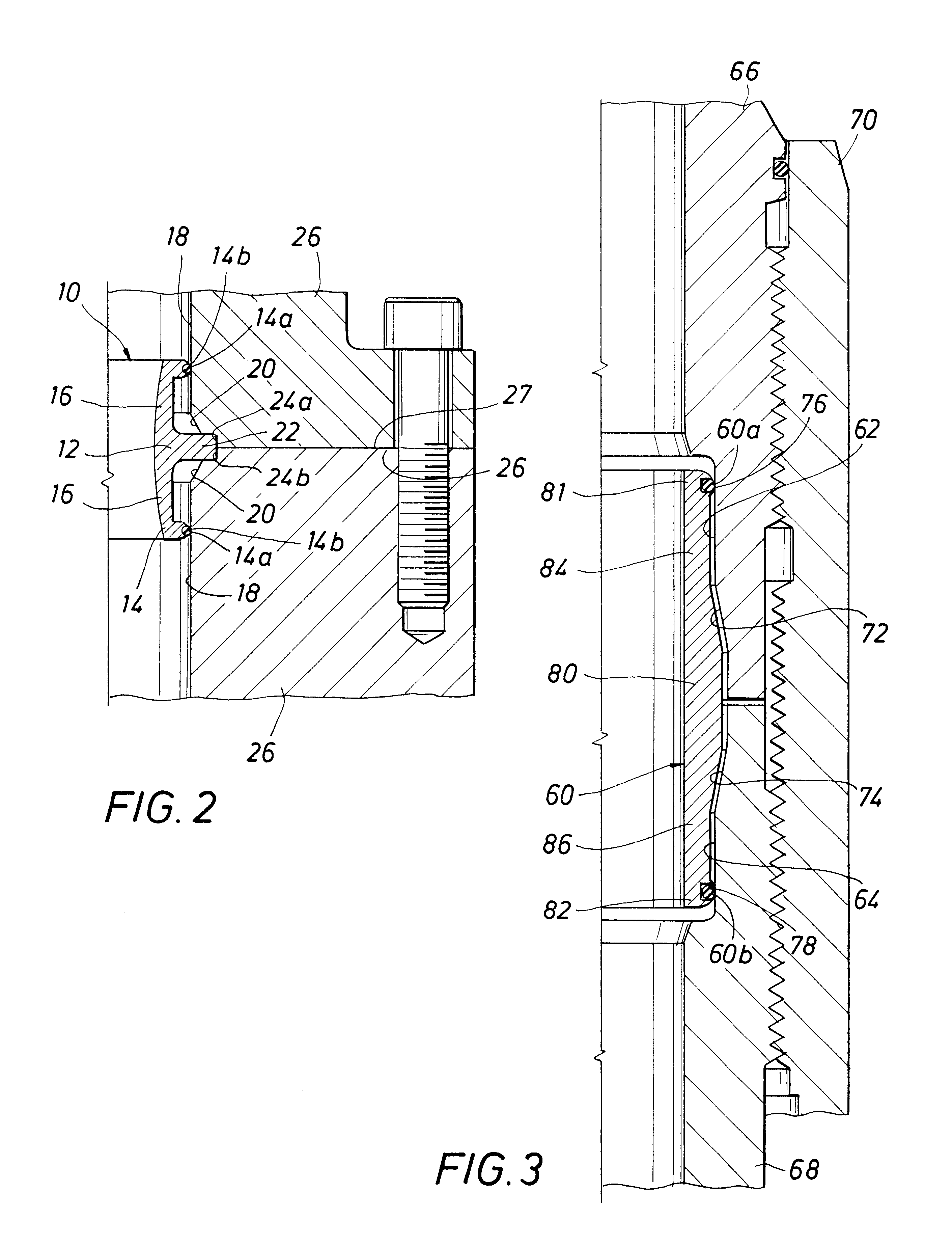Metal-to-metal seal with soft metal insert
a metal-to-metal seal and metal insert technology, applied in the direction of cable termination, hose connection, borehole/well accessories, etc., can solve the problems of limited wear/corrosion life of coatings, inability to fill large defects in sealing areas, and limiting material selection, so as to achieve high performance and low cost
- Summary
- Abstract
- Description
- Claims
- Application Information
AI Technical Summary
Benefits of technology
Problems solved by technology
Method used
Image
Examples
Embodiment Construction
Referring now to the drawings and first to FIGS. 1 and 2, a metal-to-metal sealing system embodying the principles of the present invention is shown to be provided for sealing a number of joints of a wellhead or conduit assembly. The metal-to-metal sealing system comprises an annular metal seal body element shown generally at 10 having an annular base portion 12 which defines at least one annular sealing lip 14 projecting radially toward and establishing metal-to-metal sealing engagement with an annular surface 18 which may be a tapered surface as shown in FIG. 1 or a cylindrical surface as shown in FIG. 2.
As is shown in greater detail in FIG. 2, the annular metal seal body 10 of the metal-to-metal sealing system has an annular soft metal sealing insert 14a, being supported with an insert groove of the annular sealing lip 14 and defining an annular sealing surface 14b. The annular sealing surface 14b may be of curved cross-sectional configuration, cylindrical cross-sectional configu...
PUM
 Login to View More
Login to View More Abstract
Description
Claims
Application Information
 Login to View More
Login to View More - R&D
- Intellectual Property
- Life Sciences
- Materials
- Tech Scout
- Unparalleled Data Quality
- Higher Quality Content
- 60% Fewer Hallucinations
Browse by: Latest US Patents, China's latest patents, Technical Efficacy Thesaurus, Application Domain, Technology Topic, Popular Technical Reports.
© 2025 PatSnap. All rights reserved.Legal|Privacy policy|Modern Slavery Act Transparency Statement|Sitemap|About US| Contact US: help@patsnap.com



